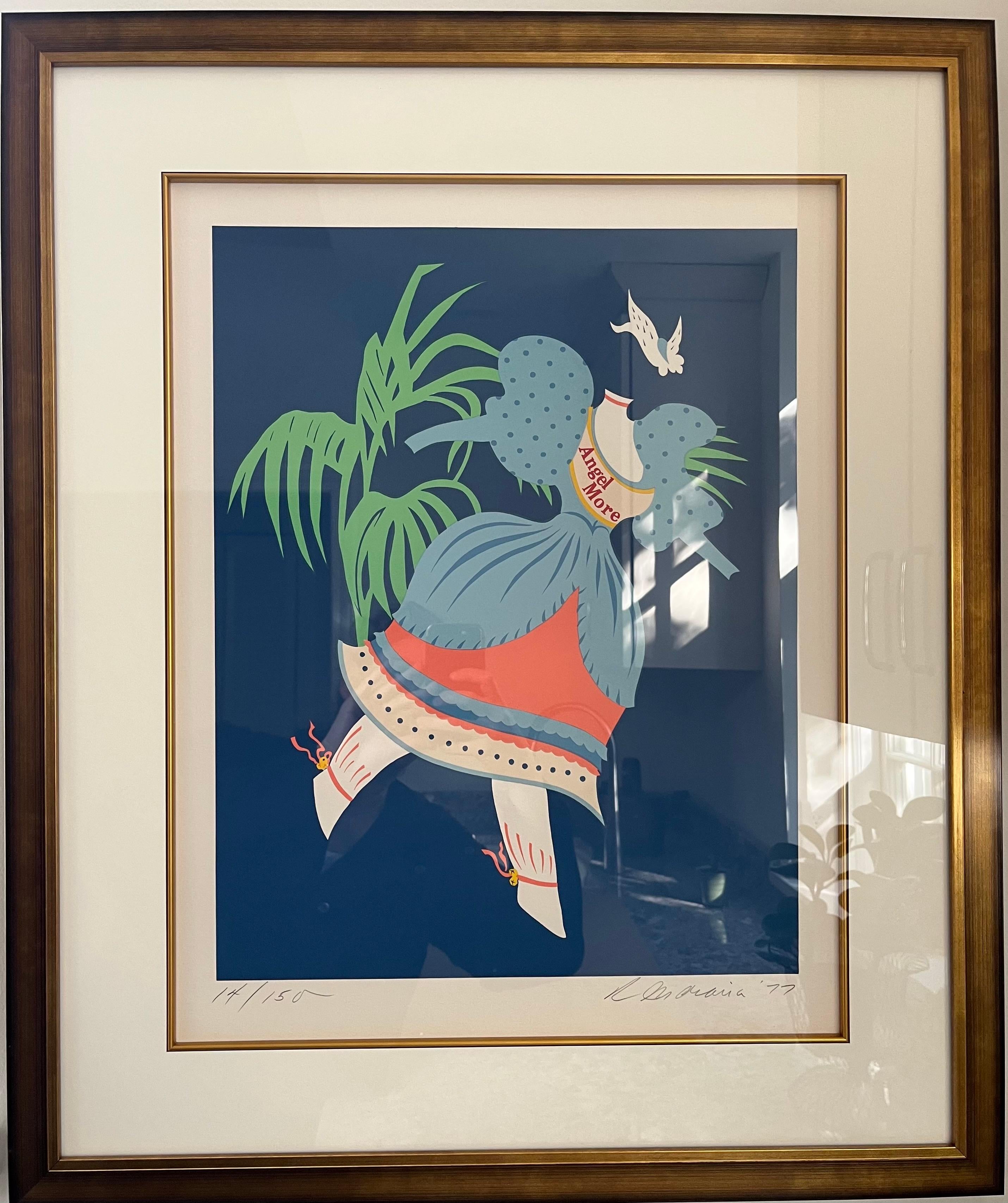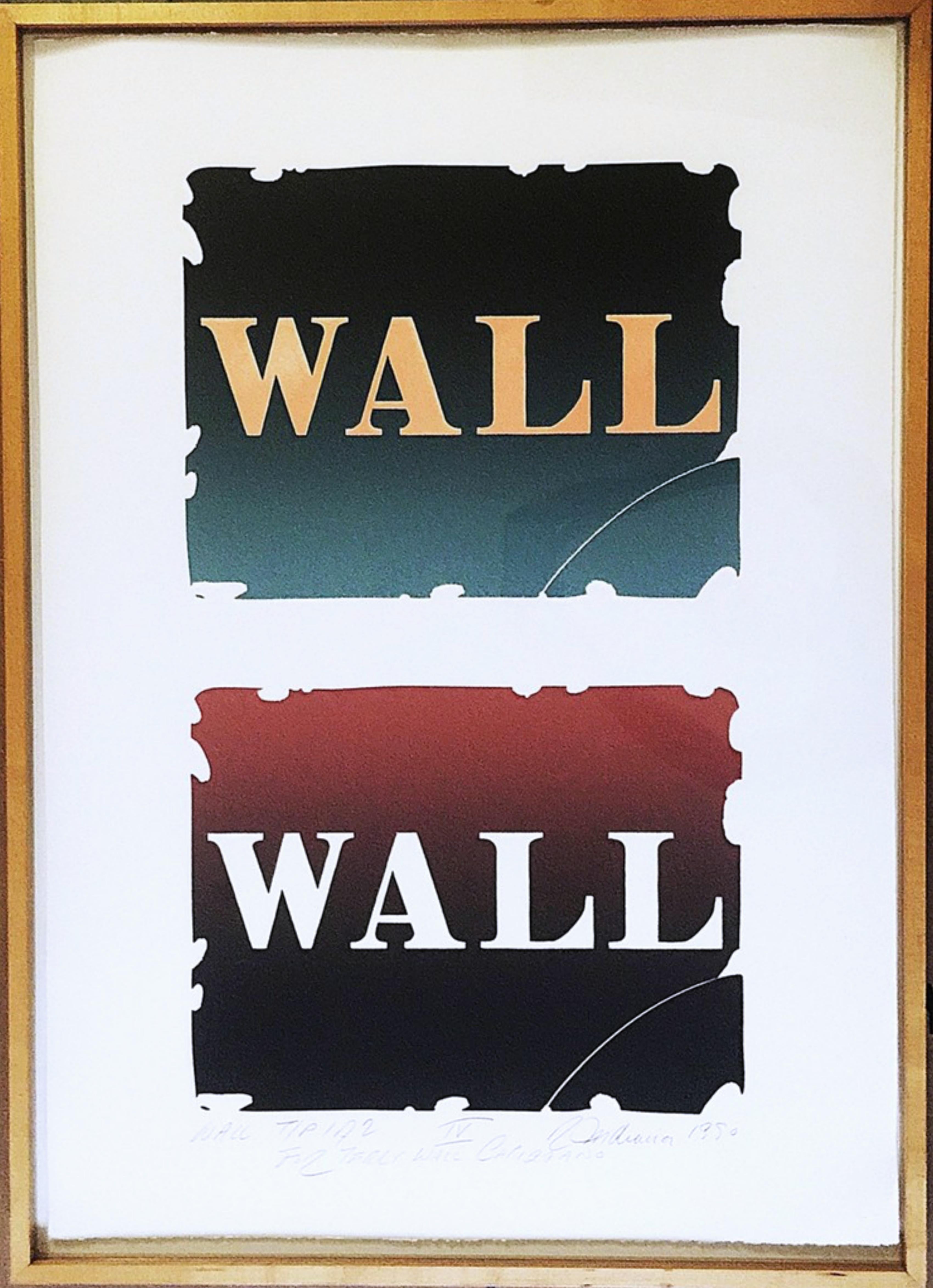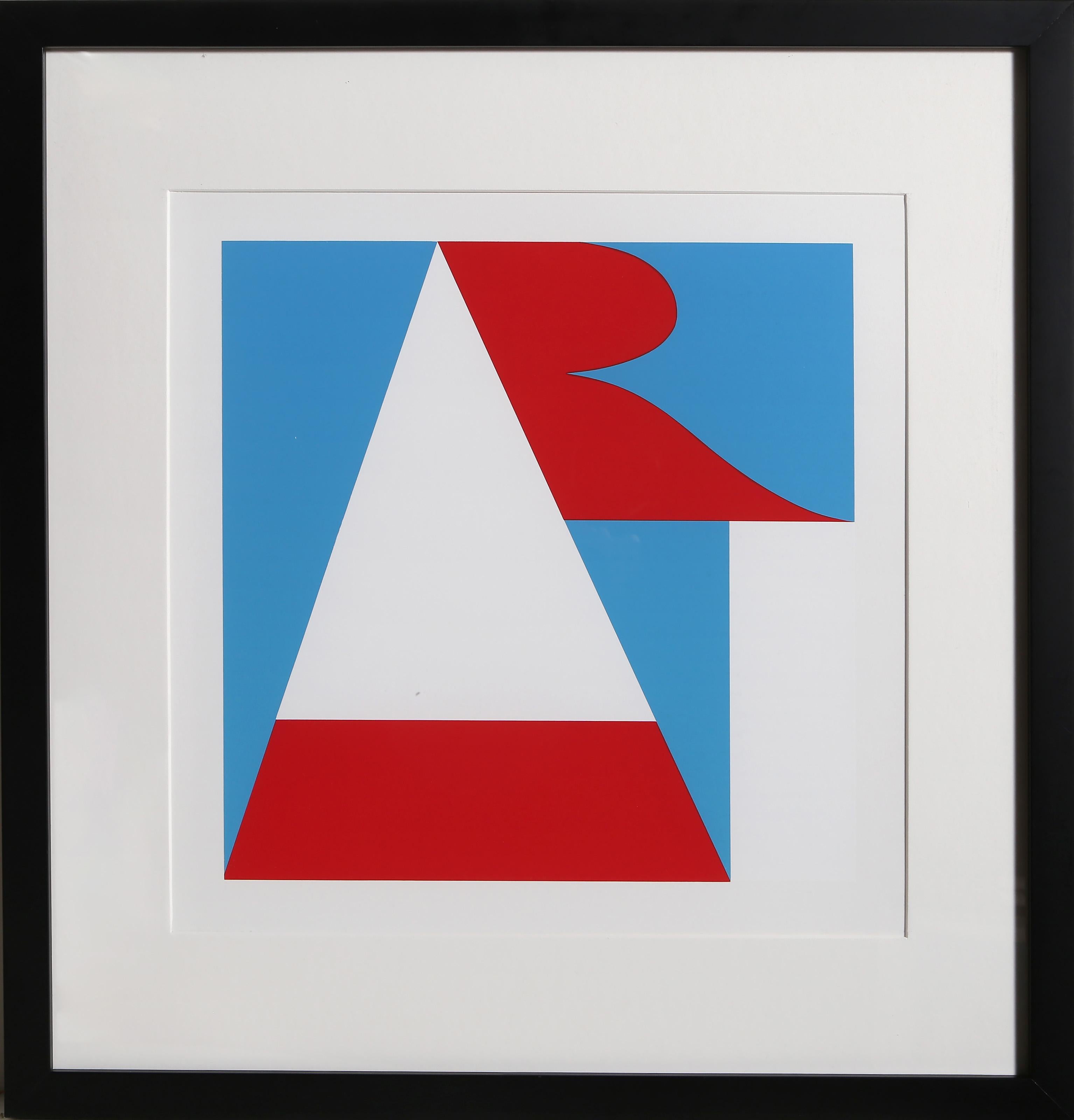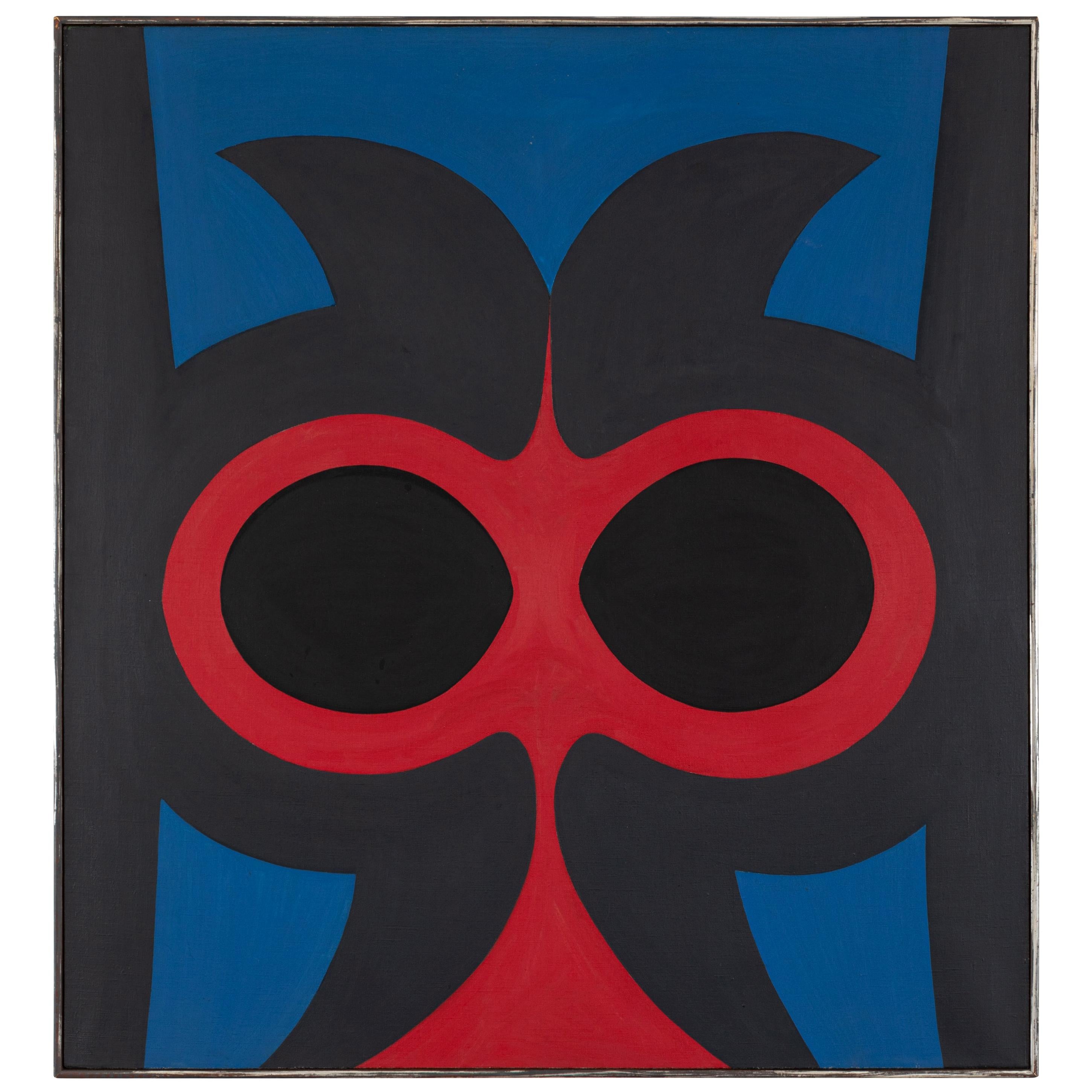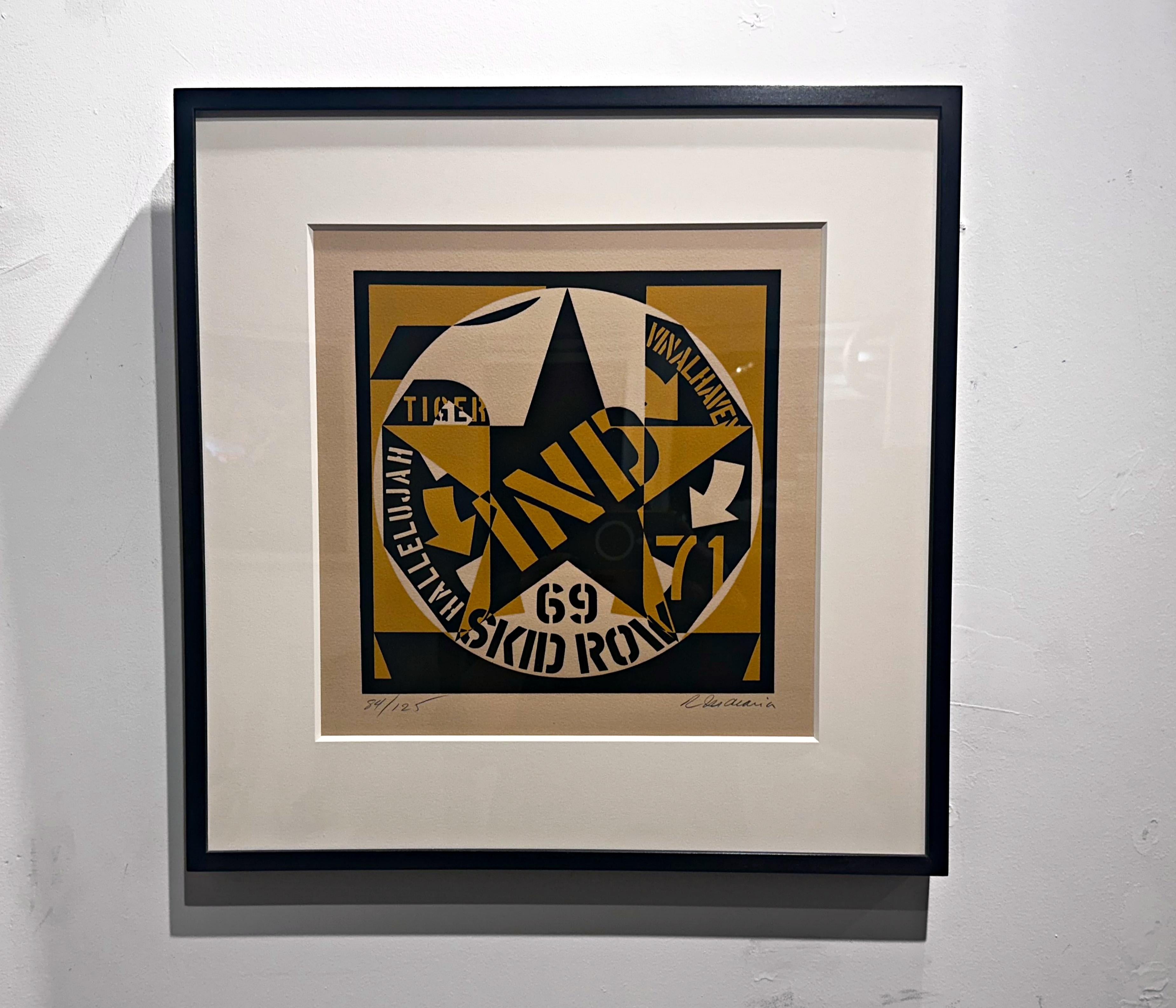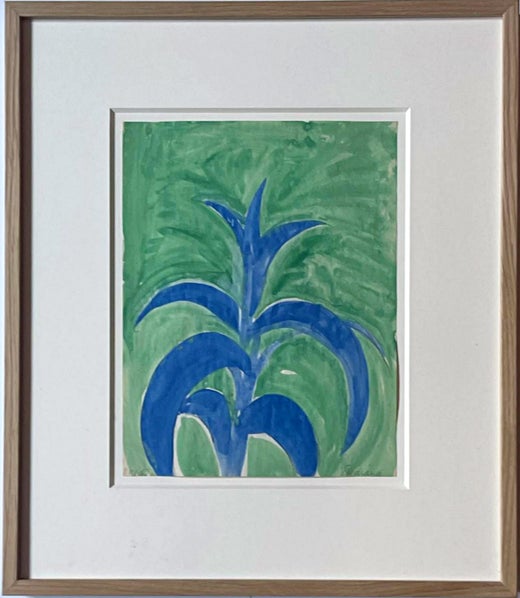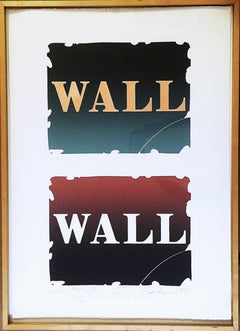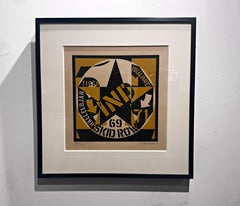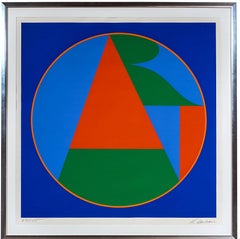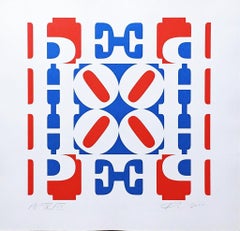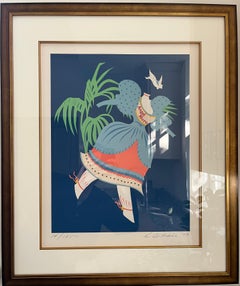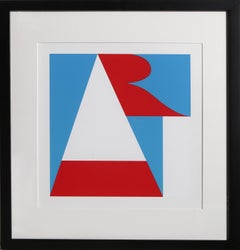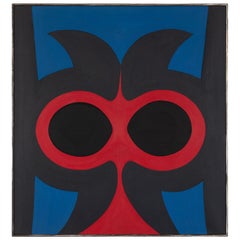Robert Indiana
Untitled homage to Ellsworth Kelly (Acquired from the Estate of Robert Indiana), 1959
Watercolor and pencil on Plover Bond paper
his is an original, hand signed watercolor on paper painting by Robert Indiana from an important era in the artist's early career. It had been in the artist's personal collection for more than half a century, until it was sold from the Estate Collection by Robert Indiana's former studio assistant.
This work is signed and dated 1959. The influence of Ellsworth Kelly on Robert Indiana at this time is unmistakable: In fact, in 1959, Robert Indiana and Ellsworth Kelly were in a romantic relationship, which was described as "on-again, off-again". They had met in 1956 and were living and working in the Coenties Slip area of lower Manhattan, a community of artists that also included Agnes Martin and Jack Youngerman. Later on, Robert Indiana would acknowledge that he resented being called a Pop artist, as he aligned himself much more with the hard edge and Minimalist aesthetic of his former lover Ellsworth Kelly. The similarity between Robert Indiana's flower here, and Ellsworth Kelly's flowers is obvious, as this is a veritable homage to his lover.
Again, the present work is a scarcem, original, unique Robert Indiana work from the late 1950s; Beyond LOVE (to borrow the title of his Guggenheim retrospective), and before LOVE would make him a household name. Robert Indiana works from this era are rarely seen on the marketplace, especially not with such fine provenance.
This work is elegantly floated and framed in a museum quality handmade wood frame under UV plexiglass.
Measurements:
Framed:
18 inches vertical by 15.5 horizontal by 1.5 inches
Watercolor:
11 inches vertical by 8.5 inches
ROBERT INDIANA BIOGRAPHY
One of the preeminent figures in American art since the 1960s, Robert Indiana played a central role in the development of assemblage art, hard-edge painting, and Pop art.
Indiana, a self proclaimed “American painter of signs,” created a highly original body of work that explores American identity, personal history, and the power of abstraction and language, establishing an important legacy that resonates in the work of many contemporary artists who make the written word a central element of their oeuvre.
Robert Indiana was born Robert Clark in New Castle, Indiana on September 13, 1928. Adopted as an infant, he spent his childhood moving frequently throughout his namesake state. His artistic talent was evident at an early age, and its recognition by a first grade teacher encouraged his decision to become an artist. In 1942, Indiana moved to Indianapolis in order to attend Arsenal Technical High School, known for its strong arts curriculum. After graduating he spent three years in the U.S. Air Force and then studied at the Art Institute of Chicago, the Skowhegan School of Sculpture and Painting in Maine, and the Edinburgh College of Art in Scotland.
In 1956, two years after moving to New York, Indiana met Ellsworth Kelly, and upon his recommendation took up residence in Coenties Slip, once a major port on the southeast tip of Manhattan. There he joined a community of artists that would come to include Kelly, Agnes Martin, James Rosenquist, and Jack Youngerman. The environment of the Slip had a profound impact on Indiana’s work, and his early paintings include a series of hard-edge double ginkgo leaves inspired by the trees which grew in nearby Jeannette Park. He also incorporated the ginkgo form into his nineteen-foot mural Stavrosis (1958), a crucifixion pieced together from forty-four sheets of paper that he found in his loft. It was upon completion of this work that Indiana adopted the name of his native state as his own.
Indiana, like some of his fellow artists, scavenged the area’s abandoned warehouses for materials, creating sculptural assemblages from old wooden beams, rusted metal wheels, and other remnants of the shipping trade that had thrived in Coenties Slip. While he created hanging works such as Jeanne d’Arc (1960–62) and Wall of China (1960–61), the majority were freestanding constructions which Indiana called “herms” after the sculptures that served as boundary markers at crossroads in ancient Greece and Rome. The discovery of nineteenth-century brass stencils led to the incorporation of brightly colored numbers and short emotionally charged words into these sculptures as well as canvases, and became the basis of his new painterly vocabulary.
-Courtesy PACE Gallery
